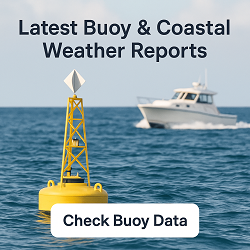Worcester, MA Weather Forecast and Current Conditions (01601)
Current Conditions From Nearby Local Station

Feels Like 54°F
at
Current Conditions From Nearby Local Station

Feels Like 54°F
at
Point Forecast at a Glance







This Date in Weather History
1752 - The second severe hurricane in two weeks hit the Carolinas. The Onslow County Courthouse was destroyed along with all its records, and Beacon Island disappeared.
More on this and other weather history
Worcester 7 Day Weather Forecast Details
Wednesday Oct 1

Day: Sunny, with a high near 64. Northeast wind around 8 mph.

Night: Clear, with a low around 41. Northeast wind 5 to 8 mph.
Thursday Oct 2

Day: Sunny, with a high near 63. Northeast wind 3 to 7 mph.

Night: Mostly clear, with a low around 43. South wind around 3 mph.
Friday Oct 3

Day: Sunny, with a high near 70. Southwest wind 3 to 8 mph.

Night: Clear, with a low around 49. West wind around 6 mph.
Saturday Oct 4

Day: Sunny, with a high near 79. West wind around 5 mph.

Night: Mostly clear, with a low around 54. West wind around 3 mph.
Sunday Oct 5

Day: Sunny, with a high near 81. West wind around 5 mph.

Night: Clear, with a low around 54. Southwest wind around 5 mph.
Monday Oct 6

Day: Sunny, with a high near 79. Southwest wind around 7 mph.

Night: Mostly clear, with a low around 58. Southwest wind around 7 mph.
Tuesday Oct 7

Day: A slight chance of rain showers after 5pm. Mostly sunny, with a high near 79. Southwest wind 6 to 9 mph.

Night: A chance of rain showers. Partly cloudy, with a low around 58. Southwest wind around 7 mph.
Sun & Moon Monthly
Sunrise 6:45 AM
Sunset 6:30 PM
Last Light 6:58 PM
Moonset 12:03 AM

Contiguous United States Extremes
Tue's High Temperature
100 at Gila Bend, AZ
Wed's Low Temperature
26 at Saranac Lake, NY
Weather Folklore
If frogs make a noise at the time of cold rain, warm dry weather will follow.
Current subscribers - login to your ClearSky account
About Worcester, Massachusetts
Worcester ( WUUST-ər, locally [ˈwɪstə] ) is a city in the U.S. state of Massachusetts. The principal city of Central Massachusetts, Worcester is both the second-most populous city in the state, and the 113th most populous city in the United States. Named after Worcester, England, the city had 206,518 people at the 2020 census, also making it the second-most populous city in New England, after Boston. Because it is near the geographic center of Massachusetts, Worcester is known as the "Heart of the Commonwealth"; a heart is the official symbol of the city. Worcester is the historical seat of Worcester County.
Founded in 1722 and incorporated in 1848, Worcester developed as an industrial city in the 19th century due to the Blackstone Canal and railways, which facilitated the import of raw materials and the export of such finished goods as machines, textiles, and wire. The city's population grew, driven by European immigration. After World War II, manufacturing in Worcester waned, and the city declined economically and in terms of population. This trend was not reversed until the 1990s, when higher education, medicine, biotechnology, and new immigrants started making their mark. The population has grown by 28% since 1980, reaching its all-time high in the 2020 census, in an example of urban renewal. Since the 1970s, and especially since the construction of Route 146 and interstates 90, 495, 190, 290, and 395, both Worcester and its surrounding towns have become more integrated with Boston's suburbs. The Worcester region now marks the western periphery of the Boston–Worcester–Providence (MA–RI–NH) U.S. census Combined Statistical Area (CSA), or Greater Boston.
Modern Worcester is known for its diversity and large immigrant population, with significant communities of Vietnamese, Brazilians, Albanians, Puerto Ricans, Ghanaians, Dominicans, Irish, English, Italians, Greeks, and others. Twenty-two percent of Worcester's population was born outside the United States. A center of higher education, it is home to eight colleges and universities, including the College of the Holy Cross, Worcester Polytechnic Institute (WPI), Clark University, and Worcester State University. Worcester has many 19th-century triple-decker houses, Victorian-era mills and related buildings, and lunch-car diners, such as Miss Worcester.
Content from Wikipedia, licensed under CC BY-SA 3.0.
How We Provide Better Local Weather
Current conditions: We use the nearest available station to your location - including professional MESONET/MADIS and local weather stations - often miles closer than regional airports.
Forecasts: National Weather Service point forecasts predict for your specific area, not broad regional zones, making them far more relevant to your location.

